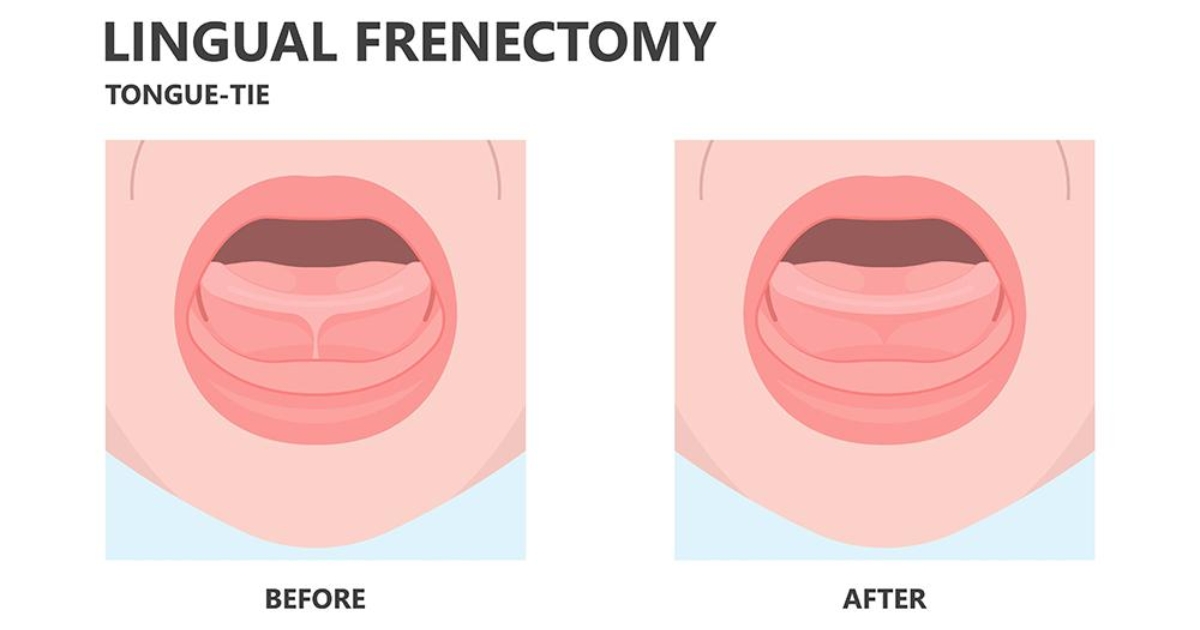Call Us Today 817-737-7668

Most of us pay no heed to how easily we talk, swallow, and even breathe. But you cannot stop paying attention to them when something is amiss. Being unable to move your tongue around as you please, trouble saying words right, or uncomfortable during meals can steal the joy of life. This is referred as tongue tie. If not treated, it can affect anything from the development of speech to oral health and even the quality of one’s sleep.
So, what’s the solution? Frenectomy and myofunctional therapy can repair tongue tie and reinstitute healthy tongue movement. Let’s walk you through this blog to shed light on how these interventions work.
What Is a Tongue Tie?
A tongue tie, or ankyloglossia is a birth defect that affects more men. If the tissue that attaches the tongue to the bottom of the mouth (lingual frenulum) is short, thick, or tight, you might struggle to move the tongue freely. It can cause difficulties in:
- Speech: Sounds like “r,” “s,” and “l” are hard to make for people with this condition.
- Eating: Chewing or swallowing with tongue tie is a real struggle that leads to food restrictions.
- Breastfeeding (in infants): Infants with tongue ties struggle to latch onto their mothers during feeding time.
- Sleep: Limited tongue movement impacts airway function. It can cause heavy snoring or sleep apnea.
Signs You Might Have a Tongue Tie
Most individuals don’t know they have a tongue tie until they have ongoing issues. Some of the signs are:
- Difficulty sticking out or lifting the tongue
- Speech difficulties that don’t get better with practice
- Pain while chewing or swallowing
- Recurring jaw tension or headaches
- Spaces between the lower front teeth
- Mouth breathing because of airway obstruction
Frenectomy: A Simple Yet Effective Solution
A frenectomy is a simple, minimally invasive procedure that frees the constricted frenulum to let the tongue move freely. Dentists can use a laser or a scalpel for this treatment. It’s a:
- Rapid procedure: Usually only a few minutes.
- Little discomfort: With current methods, there is little or no pain.
- Rapid recovery: Most patients are back to normal in a day or two.
- Instant benefits: Enhanced speech, feeding, and comfort can usually be observed soon after healing.
The Role of Myofunctional Therapy
Although a frenectomy frees the restriction, the tongue must still learn how to function. That’s where myofunctional therapy comes into play. This unique therapy is a combination of tongue and facial exercises to:
- Strengthen the tongue and oral muscles
- Refine breathing and swallowing patterns
- Clarify speech
- Relax jaw tension and posture
Who Can Benefit from These Treatments?
Tongue ties are not limited to infants. Numerous adults unwittingly have limited tongue mobility, resulting in long-term issues. These procedures can be perfect for:
- Infants: Breastfeeding becomes simpler and helps in early oral development
- Children: They learn how to speak, chew, and swallow without restrictions
- Adults: Relieving speech problems, oral health issues, and airway symptoms
What Happens After a Frenectomy?
Recovery is typically uncomplicated. Some post-procedure tips include:
- Performing gentle tongue exercises to avoid reattachment
- Consuming soft food for a day or two
- Remaining well-hydrated to allow healing
- Following up on myofunctional therapy sessions if necessary
The majority of individuals experience improvements in the functioning of the tongue within several weeks.
If you believe your little one has tongue tie, a consultation with our dental professional in Burleson can provide clarity and guidance on whether a frenectomy and myofunctional therapy are right treatments. Call for an appointment today and don’t let a tongue tie get in the way of your kid’s development.





